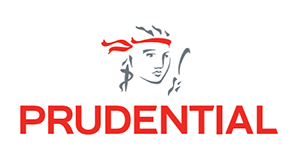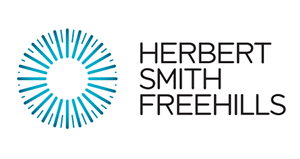COUNTRY FACTS
Population
7.56 million (estimate at mid-year 2017, World Bank); 7.09 million at last census (2015). Around 42.1% of the population live in urban areas with an estimated 3.1% annual rate of urbanization and around 42% of the youthful population is aged 0 to 15 years old (2019, MTNDP).
Geography
Situated in West Africa. Bordered to the west by the Atlantic Ocean, to the north and northeast by Guinea and to the south and southeast by Liberia.
Area
72,300 km2.
GDP
US$3.8 billion in 2017 (World Bank). Sierra Leone was hit by two shocks in mid-2014: the Ebola epidemic and sharply declining iron ore prices. As a result, economic indicators have deteriorated sharply since the outbreak. In spite of initial signs of recovery in 2016 (6.3%), growth moderated to 3.7% in 2017 primarily due to slow recovery in iron ore production and reduced government funding for infrastructure investment. Following the March 2018 presidential election, according to a June 2018 World Bank report, the medium-term outlook is somewhat more positive, with growth projected to increase to 5.0% in 2019 and 6.5% by 2020. Fiscal deficit GDP ratio has dropped from 8.7% in 2017 to 5.4% in 2018 as a result of control on expenditure and mobilisation of domestic revenue.
Currency
Leone (Le) (SSL)
Official language
English
Core industries
Agriculture & marine (key crops, such as rice, sugar, oil palm and cocoa, as well as fisheries and agribusiness functions relating to trading and/or processing. The industry is dominated by small-scale subsistence farming but shifting towards commercial exports); diamonds (according to the most recent statistics available from SLIEPA, over 204,000 carats were exported in 2017 and over 372,000 carats were exported from January to June 2018), iron ore (one of the world’s largest iron ore deposits in Sierra Leone contains an estimated 12.8 billion tonnes), rutile (the world’s largest reserves, producing an estimated 167,600 tonnes containing titanium dioxide in 2017), gold (producing approximately 188 kg in 2016) and bauxite mining (including the country’s Port Loko deposit, which contains 100 million tonnes of bauxite reserves). Tourism is another key sector in the country, with potential to tap into Sub-Saharan Africa’s US$116.9 billion tourism industry.
Key exports and imports
Sierra Leone’s main exports are in the mining and agriculture sectors. In 2014, iron ore accounted for approximately 60% of Sierra Leone’s annual export revenues. This fell to 15.8% in 2016, as iron ore price growth remained volatile, and processed crustaceans emerged as Sierra Leone’s largest single export (representing 17.7% of export revenue in 2016) with diamonds retaining a historically high proportion at 13%. In 2017, iron ore exports saw a slight revival and increased to 25% of total exports, followed by titanium ore at 16.8%.1 Other major non-mining exports include cocoa, coffee and fish. Sierra Leone’s main export partners are Belgium- Luxembourg, Netherlands, Romania, China and the US. (see Key sectors for more detailed information).
Sierra Leone’s imports are varied but include rice (14.7%), machinery and transport equipment (largely relating to mining and oil investment projects) and cars (3.2%). Sierra Leone’s main import partners are China, India, US, Belgium- Luxembourg, Netherlands, Turkey, Pakistan and South Africa.2
History & politics
Sierra Leone gained independence from Britain in 1961. From 1961-1998 the political system shifted between multi-party democracy, military rule and one-party rule. Sierra Leone has remained a multi-party democracy since 1998. The country emerged from a decade-long civil war in 2002. The Institute for Economics and Peace, a global think tank, ranked Sierra Leone in its Global Peace Index 2018: Measuring Peace in A Complex World at 35th in the world, out of 163 countries. This places the country as the most peaceful in West Africa, and the 3rd most peaceful in sub-Saharan Africa.
The Constitution recognises three branches of government: legislative, executive and judicial. Parliamentary terms last for five years and, according to the Constitution, the President may not serve for more than two terms, whether or not those terms are consecutive.
The President at the date of publication, His Excellency Julius Maada Bio, is serving his first term, having been elected in 2018, winning 51.8% of votes cast. His party, the Sierra Leone People’s Party, also holds 48 of the 132 nationally-elected seats, with the All People’s Congress holding 68 seats. 12 additional seats are filled in separate elections by paramount chiefs (non-partisan Members of Parliament, who represent each of Sierra Leone’s districts, besides Freetown). A total of sixteen parties took part in the 2018 elections. The next elections are due to be held in 2023.
Foreign aid
The country remains largely dependent on foreign aid. As of at 31 December 2018, external debts stood at US$1.5 billion. Domestic debt stands at Le 4.9 trillion (US$636.4 million). On average, a total of Le 110 billion is used to service debts monthly and debt service payment plus salaries constitute about 85% of domestic revenue collected.
The country benefits from the support of various international agencies, including the UNDP, the World Bank, the UK Department for International Development (DFID) and the US Agency for International Development.
Debt management is a key policy of the GoSL. In 2018, the GoSL reports that it has cancelled three loan agreements totalling over US$1.5 billion on the basis that they constitute a significant risk for debt sustainability. The GoSL plans to continue to link the borrowing ceiling to its medium-term debt management strategy; limit the external financing of social services to grants and reform the institutional and legal framework for access to external and domestic debt for the central and local governments and other public bodies.
There is a desire within Sierra Leone to diversify the economy through fostering trade and investment, in order to move away from reliance on foreign aid. The GoSL is looking to achieve this shift by taking advantage of the changing context of rising global production costs, emerging consumer markets in Africa and rising global food demand.
- These export statistics are based on analysis by Atlas Media of UN COMTRADE and BACI International Trade Database data.
- These import statistics are based on analysis for 2017 by Atlas Media of UN COMTRADE and BACI International Trade Database data.



